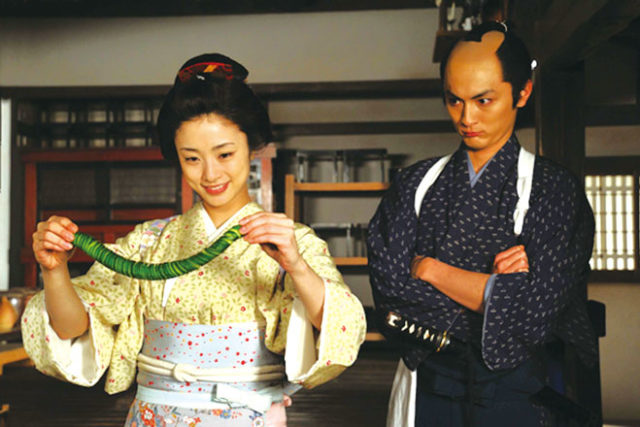By David Yamaguchi
The North American Post
For 28 years, I have enjoyed watching Japanese movies and dramas as a way to maintain and improve my second-language: Japanese. There are many reasons for doing so, including the psychological comfort of seeing faces like mine on-screen, sharpening a skill that helps me earn a living and forestall dementia by 4-1/2 years (Neurology, 2014). However, the way I watch dramas has changed in the last seven months.
Through November I did the usual Baby Boomer things: I borrowed VHS videos from friends or from rental shops and I saw films at local independent movie theaters. The latter has included the Grand Illusion and the Varsity in the University District, the Northwest Film Forum on 12th Avenue and theaters participating in the Seattle International Film Festival.
I have since moved on to checking out DVDs from the Seattle Public Library. The library has 502 films (of varying quality and condition), which can be reserved online and held at your local branch library for pickup.
In December, however, I started watching the Japanese content available on the web. Beginning with a few films available on YouTube, I soon moved on to professionally posted Asian film and drama websites.
These websites recognize that there is a previously unfilled business niche for Asian films and dramas that are subtitled in English and hosted on English-language sites. These provide a means for broadcasting (or more correctly, “narrow-casting”) films and dramas that few outside of Japan have seen to dispersed niche fans like me.
These days, my favorite site is KissAsian.com. Suggested by a Sansei neighbor, a self-admitted “drama queen,” KissAsian has two features I had not previously seen before. First, the advertisements that pay for the content appear only as small banners on the bottom of the screen, instead of as annoying video clips. The second feature is that the films and dramas can be quite new. For example, the ten episodes of “Sekai Ichi Muzukashii Koi (The World’s Most Difficult Love),” which I just finished watching, aired on Japanese TV from April, are all subtitled well in English, despite the relatively rapid posting.
By chance, three films I have enjoyed recently online are all cooking films. The “Little Forest” series—two films, subtitled “Summer and Autumn” (2014) and “Winter and Spring” (2015) is inspiring. It makes one want to withdraw from society to a mountain cabin, to live off the land and cook. Unlike typical cooking movies, making spaghetti begins with growing, peeling, and canning the tomatoes that later become the sauce. Similarly, “A Tale of Samurai Cooking (Bushi no kondate, 2013),” is exquisite for its ultra-polite language (“keigo”) and manners. Highlights include scenes of its lead protagonists (Aya Ueto and Kengo Kora) wandering the rural Noto Peninsula, on the Japan Sea, in search of the essence of local cuisine.
In addition to Japanese-language maintenance, and in these waning days of hearing Japanese in Nikkei life, watching such dramas lessens the cultural distance between Nikkei and Japanese. We can see what people are wearing on the streets in Japan, and what funny, cool expressions young people are using.
For example, “Isanami suyao,” from “Sekai Ichi” is “Oyasumi nasai” (Good night!) backwards. It is silly, I know, but recently I used it to raise a howl of laughter from a senior, a former military linguist. Perhaps that alone makes my Japanese drama-watching worthwhile.







